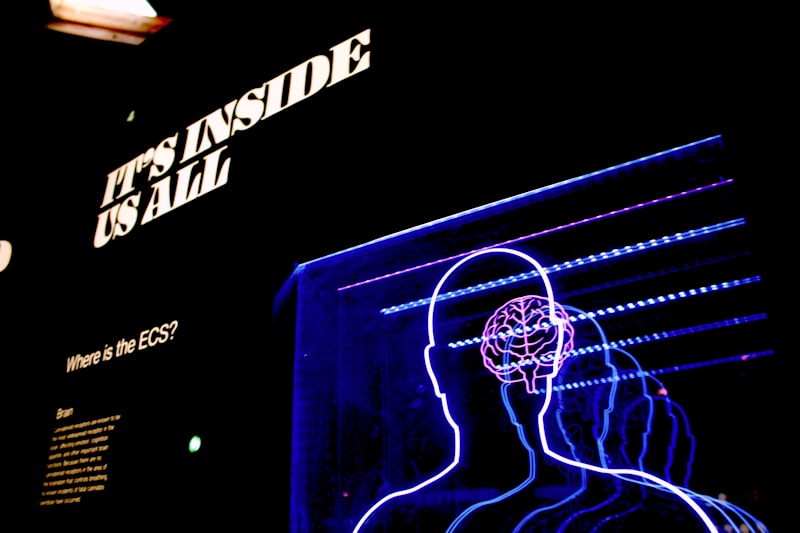9 Questions
What is attention?
What is selective attention?
What is the difference between overt and covert orienting?
What is the perceptual load theory?
What is the Stroop Effect?
What is hemispatial neglect?
What is the cocktail party problem?
What is inattentional blindness?
What is the difference between exogenous and endogenous orienting?
Summary
Psychological Process of Selectively Eating and Discrete Aspects of Information
-
Attention is the concentration of awareness on a phenomenon to the exclusion of other stimuli.
-
Attention is the allocation of limited cognitive processing resources and is manifested by an attentional bottleneck.
-
Attention is a crucial area of investigation in education, psychology, neuroscience, cognitive neuroscience, and neuropsychology.
-
Selective attention is researched through sophisticated experimental paradigms from cognitive psychology and brain imaging techniques.
-
Visual attention operates as a two-stage process: uniform distribution over the external visual scene, and concentration on a specific area of the visual scene.
-
Two models describe how visual attention operates: the spotlight model and the zoom-lens model.
-
Neuropsychology defines the working brain as being represented by three co-active processes: Attention, Memory, and Activation.
-
Multitasking involves attempting to perform two or more tasks simultaneously, leading to slower performance and more mistakes.
-
Simultaneous attention is demonstrated through Indigenous communities, where children learn through attending to their surroundings.
-
Attention may be differentiated into "overt" versus "covert" orienting.
-
Overt orienting is the act of selectively attending to an item or location over others by moving the eyes in that direction.
-
Covert orienting is the act of mentally shifting one's focus without moving one's eyes.Overview of Attention and its Orienting Processes
-
Attention can be controlled through external (exogenous) or internal (endogenous) processes.
-
Exogenous orienting is considered to be reflexive and automatic and is caused by a sudden change in the periphery.
-
Endogenous orienting occurs when attention is oriented according to an observer's goals or desires.
-
Endogenous cues must be processed by the observer and acted upon purposefully; they are frequently referred to as central cues.
-
Exogenous cues are typically presented in the periphery and are referred to as peripheral cues.
-
Bottom-up processing is driven by the properties of the objects themselves and involves parietal and temporal cortices, as well as the brainstem.
-
Top-down processing is under the control of the person who is attending and is mediated primarily by the frontal cortex and basal ganglia.
-
The perceptual load theory states that there are two mechanisms that affect attention: cognitive and perceptual.
-
Attention is a very basic function that is often a precursor to all other neurological/cognitive functions.
-
Children develop patterns of attention related to the cultural practices of their families, communities, and the institutions in which they participate.
-
Hemispatial neglect often occurs when people have damage to their right hemisphere.
-
Social attention operates at two polarizing states: attending-to-self and attending-to-others.
-
There are two types of distracting factors affecting focus: sensory and emotional.History of Attention Studies
-
Inattentional blindness refers to the phenomena where people miss other stimuli that are present when they are focused on specific stimuli.
-
Change blindness is the difficulty detecting changes from scene to scene due to intense focus on one thing or lack of attention overall.
-
Attention was first introduced by philosopher Nicolas Malebranche who believed that attention is crucial to understanding and keeping thoughts organized.
-
Wilhelm Wundt introduced the study of attention to psychology and measured mental processing speed using mental chronometry.
-
The subtractive method was formalized by Franciscus Donders which measures the time difference between stimulus discrimination and response initiation.
-
Hermann von Helmholtz stated that it is possible to focus on one stimulus and still perceive or ignore others.
-
William James differentiated between sensorial attention and intellectual attention and immediate or derived attention.
-
During the behaviorism era, Jersild published important work on "Mental Set and Shift".
-
In 1935, John Ridley Stroop developed the Stroop Task which elicited the Stroop Effect.
-
Modern research on attention began with the analysis of the "cocktail party problem" by Colin Cherry in 1953.
-
Broadbent's Filter Model of Attention states that information is held in a pre-attentive temporary store, and only sensory events that have some physical feature in common are selected to pass into the limited capacity processing system.
-
The early-selection vs. late-selection models debate was resolved by Lavie's perceptual load theory.
Description
Test your knowledge on the fascinating topic of attention and its role in psychological processes with this informative quiz. From the history of attention studies to the discrete aspects of information, this quiz covers a range of topics including selective attention, visual attention, multitasking, and more. Challenge yourself and learn about the different models of attention, the mechanisms that affect attention, and the development of patterns of attention in children. Impress your friends with your newfound knowledge of attention and its orienting processes. Take the quiz now!



